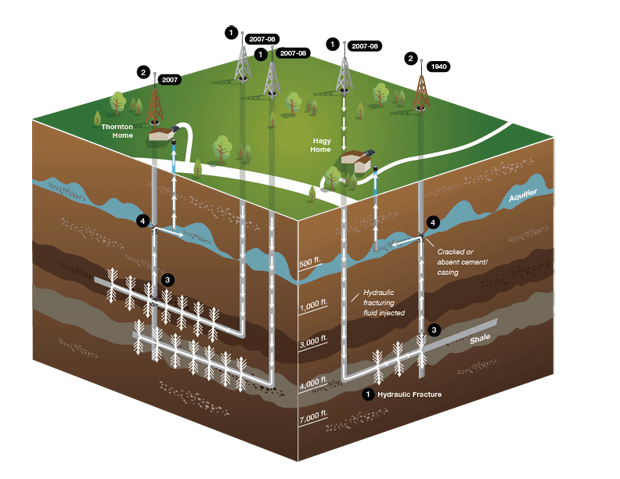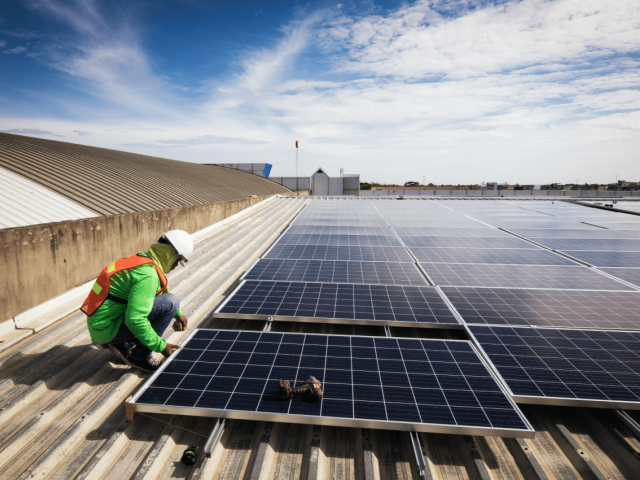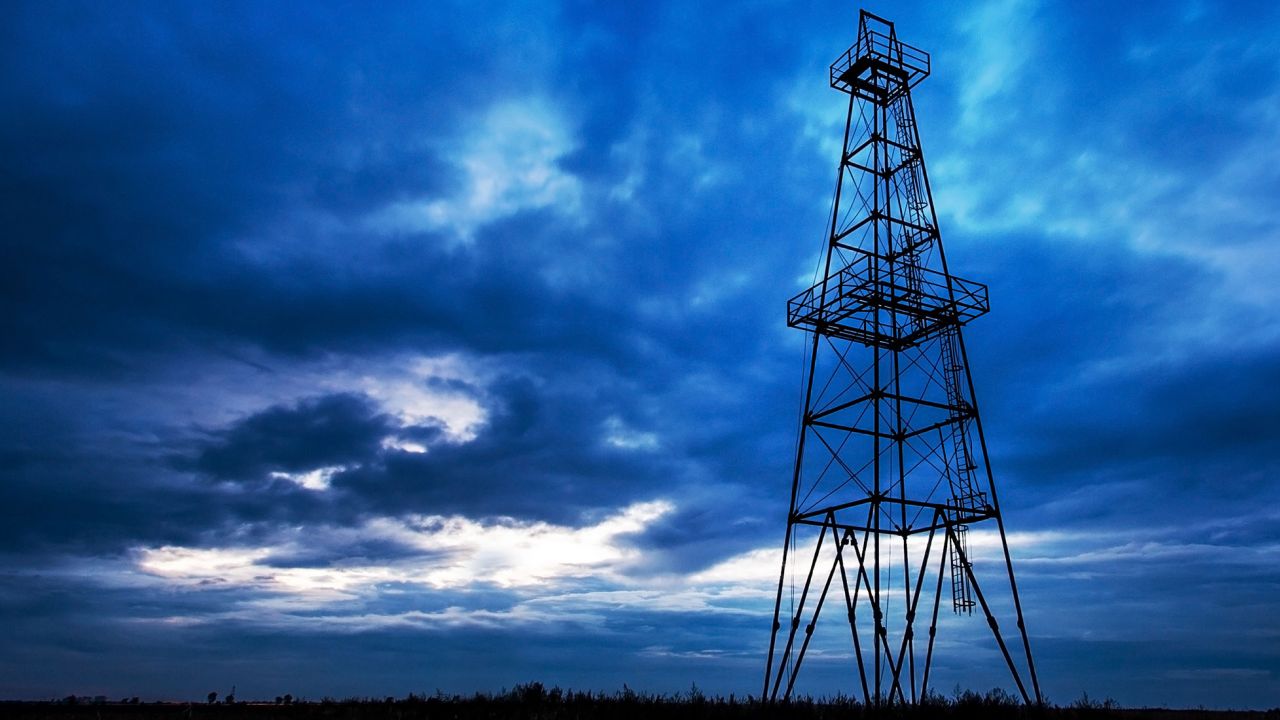
View and Download the report here: Cracks in the Façade
August 3, 2011
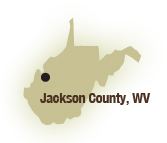
An Environmental Working Group investigation by Senior Counsel Dusty Horwitt has uncovered evidence in a long-forgotten federal report and other documents that chemicals from hydraulic fracturing of natural gas wells contaminated drinking water used by two West Virginia families. These graphics illustrate how the "fracking" chemicals might have reached the Parsons and Hagy families' water wells.
EPA Traced Pollution of Underground Water Supply to Hydraulic Fracturing
In 1982, Kaiser Gas Co. drilled and hydraulically fractured a natural gas well on the property of James Parsons in Jackson County, W. Va. The EPA concluded in a 1987 report to Congress that the process contaminated Parsons' water well with fracturing fluid . It is unclear how the "fracking" fluids may have entered the water well, but four old natural gas wells nearby could have been the conduits for contamination.
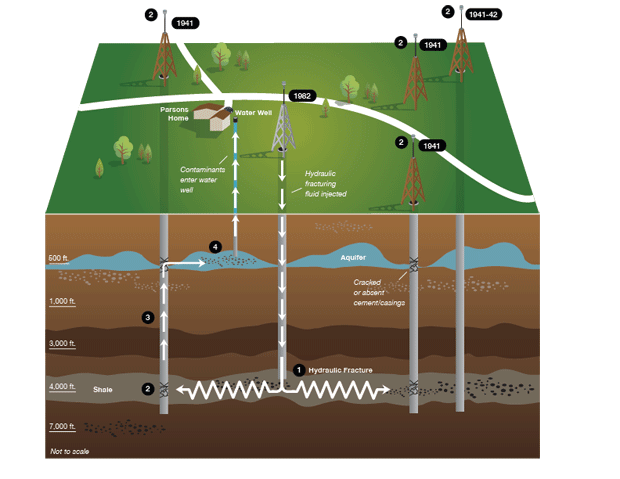
1- Hydraulic Fractures
According to industry studies, hydraulic fractures can extend up to 2,500 feet horizontally in any underground, well within range of old natural gas wells near Parsons' property. Studies found that fractures have broken into nearby oil and gas wells and that fracking fluid has migrated up old wells to the surface.2- 1940s Wells Nearby
Four old natural gas wells were located within 1,700 feet of the gas well drilled on James Parsons' property. Each of the wells was "shot," an early fracturing process in which companies detonated explosives inside a well to help access gas or oil deposits.3- Fluid Migration
Government studies have found that oil and natural gas waste fluids injected underground can migrate up old oil and natural gas wells.4- Breakout into Aquifer
These fluids can break into aquifers near the surface if the old wells have deteriorated casings, lack cement plugs or contain cracked cement. This phenomenon is known as "salt water breakout." It is possible that hydraulic fracturing fluids migrated in a similar way into Parsons' water well.Families Say Drilling, Fracturing Polluted Their Water
In 2007 and 2008, a Charleston, W.Va.-based natural gas company, Equitable Production Co., drilled and hydraulically fractured three natural gas wells on the property of Dennis and Tammy Hagy in Jackson Co. W.Va. In July, 2008, five months after Equaitable fractured its third well, the Hagys say their water started turning brown and they became sick. A neighbor, Ben Thornton, said his family's water aslo became pol- luted and that he and his family got sick until they switched to bottled water.
